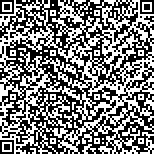下载中心
优秀审稿专家
优秀论文
相关链接
摘要

雷达遥感中地表不同岩石类别的后向散射一般差别不大, 因此以散射幅度为主要探测因子的常规雷达遥感数据不利于岩性分类。极化雷达以散射矩阵或Stokes矩阵的形式, 记录了更多的地物回波信息。信息源的增多, 有利于提高岩性分类的精度。但是, 由于不同极化状态回波信号之间的相关性, 极化数据不可避免地产生数据冗余, 反而增大了岩性分类的误差。为增强极化数据在岩性分类中的应用, 使用Colude提出的目标相关矩阵特征向量分解方法, 将岩石散射分成互相独立的 3部分:单向散射, 双向散射和交叉散射。目标分解技术降低了同一岩性岩石同极化回波之间的相关性, 更清晰地显示了不同岩石类别的散射强度差异, 显示了极化数据在岩性分类中的优势。利用1994年 10月获取的新疆北部山区SIR C极化数据, 对不同岩性岩石的目标分解数据以及线性极化后向散射强度数据进行了综合的统计分析, 建立了适合每一种岩性识别的散点图, 并将这些数据作为输入端进行神经网络分类, 分类精度最大可达 94%, 误差最小为 1.06 %。
Due to the similarity of backscattering intensity of rocks, the general SAR data is not easy to make lithological classification on the earth surface. Polarimetric Radar records Stokes of Scattering Matrix of backscattering waves, which increases the classification precision. But meanwhile, the data fusion coming from the coherence of different polarizations in the polarimetric data produces more error for lithological classification. This paper divides the rock's backscattering into three parts: Single Scattering, Double Scattering, and Cross Scattering The decomposition decreases the coherence of co polarization backscattering waves, enhances the backscattering difference of rocks, and shows the ability of lithological classification for polarimetric data. The polarimetric data used in this paper was obtained in October 1993, in the north of Xinjiang Province. With the statistic analysis, this paper builds the scatter plots for each kind of rocks, and input them into the Neural Network Classifier. The maximum precision is 94% and minimum error 1.06%.

